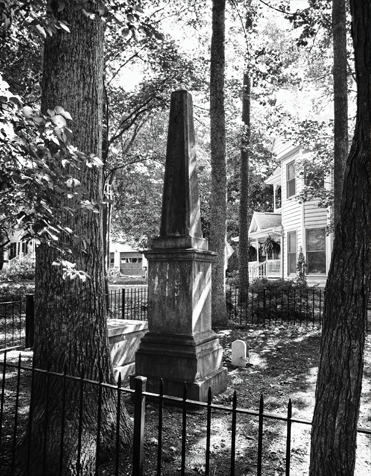Sleepy Hollow is known for its headless horseman, a tale that’s told far and wide as people get into the Halloween spirit. What many don’t realize is Cary isn’t as different from Sleepy Hollow as it might seem.
It doesn’t have a headless rider — or any rider at all — but supposedly the ghost of a horse has been reported in the area around the Page-Walker Arts & History Center.
As the story goes, recorded by Peggy Van Scoyoc in her book Just a Horse-Stopping Place, the Page homestead located at that site was a stopping ground for Union soldiers during the Civil War. One of the soldiers passed away on the property, and when his comrades went to tend to his horse the next day, it was nowhere to be found.
Numerous times, long after the war was over, people staying at the Page-Walker Hotel reported hearing a horse galloping by at full speed, but when they look around the property to determine the source of the sound they can never find any traces of the animal.
Kris Carmichael, supervisor of the center, says she’s never personally experienced anything supernatural, “but (I) have heard from some who have heard footsteps.” Whether the spirits are real or legend, she likes spreading their stories.
“I enjoy sharing Cary history through tales and legends as it tends to really engage the imagination and people tend to recall the facts as well as the folklore,” she said. She collaborated with Debra Grannan, of the Cary Players, to draft the stories presented in the Haunted Twilight Tour of Downtown Cary, which is now in its third year. “We strive to weave in lots of facts with the fiction.”

Another seasonal program, Mysteries and Secrets: Exploring Cary-Area Cemeteries, shares some more fascinating yet macabre stories. According to the program, about 35,000 small cemeteries had been abandoned in North Carolina as of a 1988 study. The Friends of the Page-Walker have compiled a list of Cary cemeteries, and currently that list has 46 different plots in and near Cary.
The location of the oldest one might come as a surprise. It’s in the middle of Maynard Oaks subdivision, nestled right between two homes on a peaceful cul-de-sac.
It’s called White Plains Cemetery, and it’s the resting place of Nathanial Jones of White Plains, who settled in Cary in 1774 and owned most of eastern Cary by 1811. The cemetery lies on land that used to be part of his plantation.
Family cemeteries were commonplace in those days, and White Plains is a good example. Jones’ first wife, Millicent Blanchard, bore seven children before her death, and his second wife, Rachel Perry, bore nine. Both wives and seven of their children are buried in the small cemetery alongside Jones.
Its centerpiece is the nearly 8,000-pound obelisk memorializing Jones, with the box tomb of Perry also an impressive sight. By the late 1980s, time had ravaged the cemetery, with the obelisk leaning and the box tomb nearly collapsed. However, joint efforts from the Town of Cary, the neighborhood’s developer, the Cary Historical Society and Friends of the Page-Walker have restored and updated the plot.
The site now serves as a beautiful memorial to those interred, as well as and lesson in Cary history. An informational sign gives further details about the Jones family and the history of the cemetery.
For more information on White Plans and other area cemeteries, check out the Mysteries & Secrets 2011 presentation on Oct. 25 at 7:30 p.m., in the main gallery of the Page-Walker Arts & History Center.
The Haunted Twilight Tour will begin at 6:30, 7:00 and 7:30 p.m. on Oct. 28, also at the Page-Walker. Tickets are $13.





